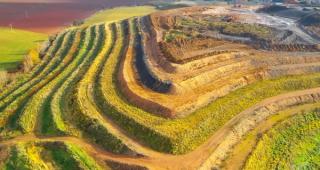
Business beyond compliance: The need for human rights action
by Heba Megahed, Miguel Oyarbide
View post

In February 2024, the Global Reporting Initiative (GRI) released its sector standard for mining (GRI 14: Mining Sector 2024). The standard comes into effect on January 1, 2026, giving mining companies the opportunity to begin to implement sector guidance before reporting [1].
GRI has been around since 1997 and introduced the first version of its flagship guidelines and reporting standards in 2000. The GRI standards are an interconnected, modular system of standards that have been developed to help organizations determine what topics are material to them to achieve sustainable development. Over 14,000 companies across 100 countries now report on the GRI standards and the International Council on Mining and Metals requires member compliance [2].
GRI 14 was developed to address the need for complete and consistent reporting on the mining sector’s wide-ranging impacts, along with broad stakeholder expectations for transparency. The new standard also reflects the complexities of the mining sector — providing essential minerals and metals, while having significant impacts on the environment, communities, and workers.
SLR Consulting is uniquely suited to support mining companies in navigating the new standard, with technical experts in the environmental concerns of the mining industry (including air and water quality, tailings and mine water management, and decommissioning) that can help companies collect site data and implement safer, more responsible mining operations and a global team of sustainability experts that can help companies understand their data gaps and how to compile information and report to the GRI.
Meanwhile social investments by companies can be articulated with confidence through Business for Societal Impact (B4SI), where the SLR-supported team provides the mining industry with a globally- accepted social impact measurement framework and peer benchmarking that alleviates pressure from threats of social washing.
GRI specifies that the sector standard applies to the following types of companies and that the standard can be used by any organization in the mining sector, including those involved in:
Because of the innate social and environmental risks associated with mining, GRI outlines specific expectations for the sector. These include sector-agnostic disclosure topics [e.g., greenhouse gas (GHG) emissions, water and effluents, economic impacts] – with additional mining sector recommendations, such as including land use change emissions in Scope 1 emissions and disaggregating community investments by mine site. [3]
The industry standard also includes mining-specific reporting topics, such as tailings management and mitigating risks from operating in conflict zones. Mining companies will also need to report on procedures for mine closure and decommissioning – a critical part of mine sustainability with serious long-term environmental and socioeconomic risks.
GRI releases sector standards before they come into effect to allow companies time to collect the right data and identify gaps and potential improvement areas. Here are the next steps mining companies can take to prepare:
Data collection is the first and most important step to understanding the data, identifying performance gaps, and prioritizing areas for improvement. Several companies in the mining industry may have a head start by already complying with existing frameworks such as the Global Industrial Standard on Tailings Management (GISTM)[4] and/or the International Cyanide Code [5], both of which are referenced in the new GRI standard. But translating these internal data collection and reporting frameworks into external GRI reporting standards can be challenging. Companies will also need to coordinate with their financial, risk, and legal teams to understand what can be reported externally and how.
In addition to SLR’s global team of technical experts supporting the data collection and management itself, SLR’s ESG Advisory Team supports clients with this process by reviewing internally and externally reported information against reporting standards like GRI to understand where gaps exist and develop tangible recommendations for improvement. During this process, companies may also find that there are areas that they are excelling in already that may not be reported on yet. The ESG Advisory Team also reviews reporting data against a company’s peers to ensure they are keeping up with industry standards.
Mining facilities require unique design and technical considerations to minimize risks to people and the environment throughout the facility lifecycle, including closure and post-closure. These considerations are expected to be monitored, evaluated, and updated regularly, according to findings from reviews, risk assessments, and whenever there are material changes.
SLR’s technical team includes experts in GISTM, geochemistry, human health and ecological risk assessment, assessment of biological resources, assessment of socioeconomic values, and GIS and Information Services who work with several international mining companies to help with their GISTM compliance programs and reporting. This includes, for example, assembling available data and performing analyses to establish Material Risk or demonstrate Safe Closure. We also perform studies for water resource conservation, developing plans to maximize water efficiency and “keep the clean water clean”.
Without preparation, companies may enter sustainability reporting season feeling lost. The steps above will help mining companies prepare for 2026, enabling smoother data collection and external reporting. Our ESG Advisory Team helps companies navigate this process and report to the GRI standards, with extensive knowledge of GRI and other investor-focused frameworks and standards, as well as ESG report writing and reviewing experience.
----------------------------------
References
[1] https://www.globalreporting.org/
[2] https://www.msn.com/en-za/news/other/new-global-standards-for-mining-sustainability-unveiled/ar-BB1i7IgV
[3] Land use change emissions are changes in GHG emissions associated with a land use change (e.g., when a forest is converted to enable mineral extraction and supporting infrastructure).
[4] GISTM addresses a spectrum of issues related to tailings and risk management including dam safety, hazard assessment, and potential impacts to human health and the environment, sensitive species and habitats, sensitive cultural and archaeological resources, and environmental, social, and economic values.
[5] https://cyanidecode.org/

by Heba Megahed, Miguel Oyarbide

